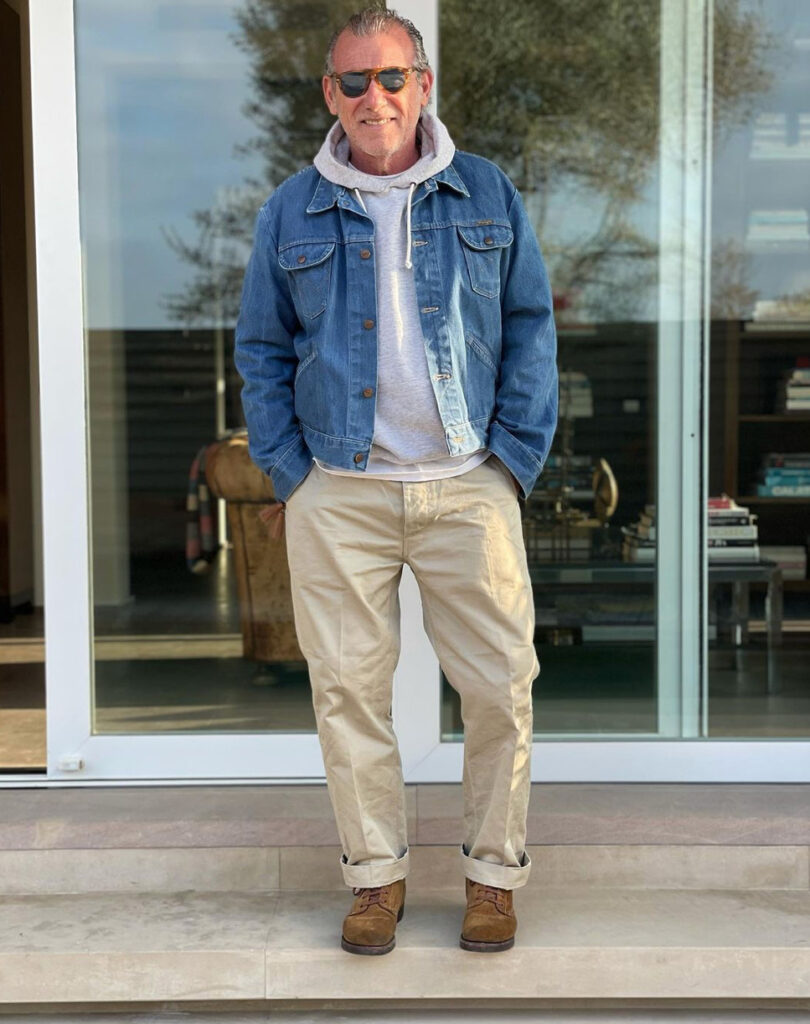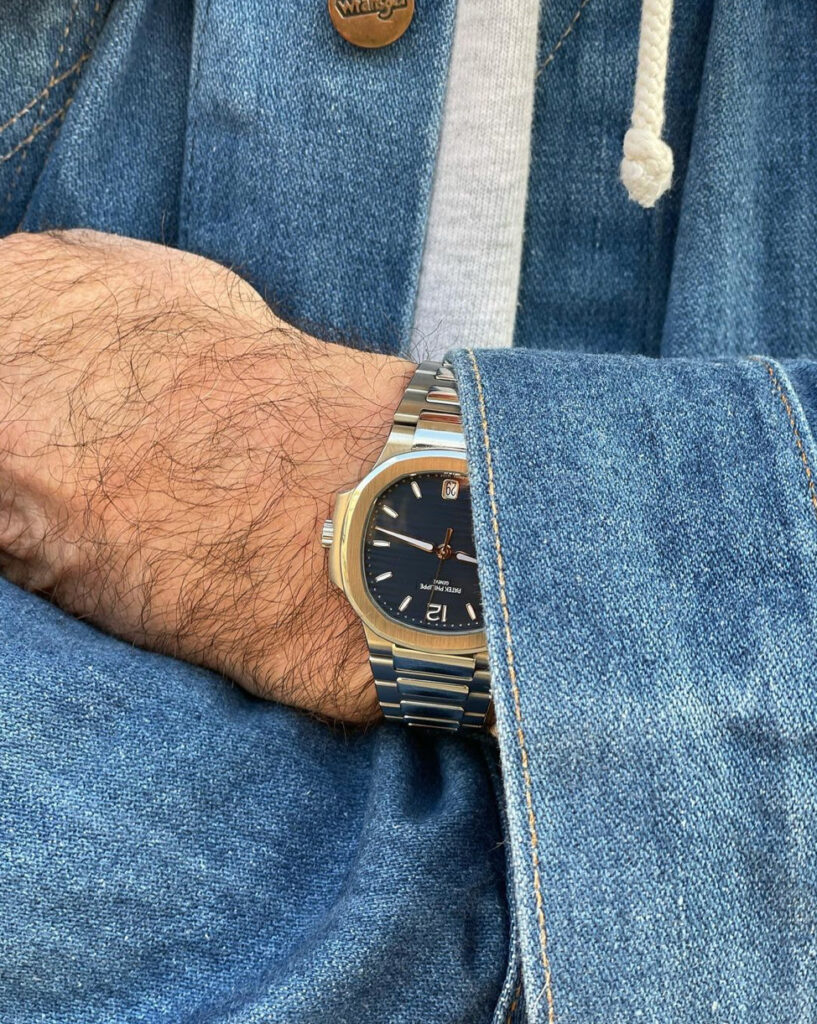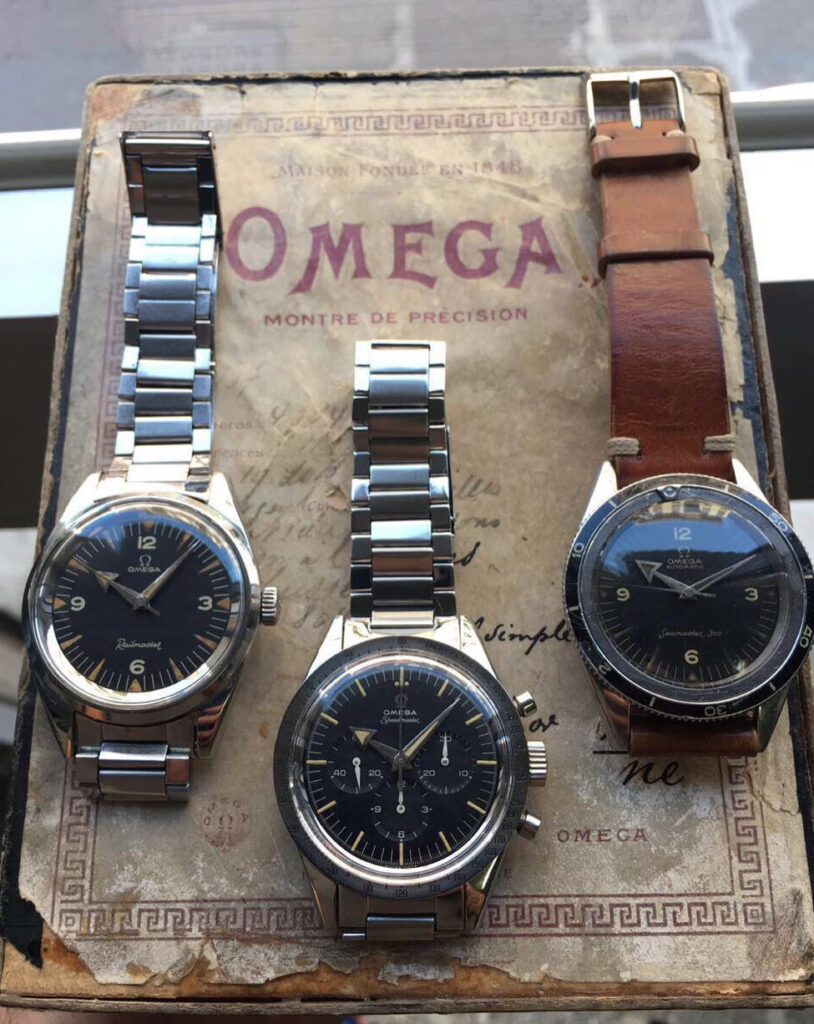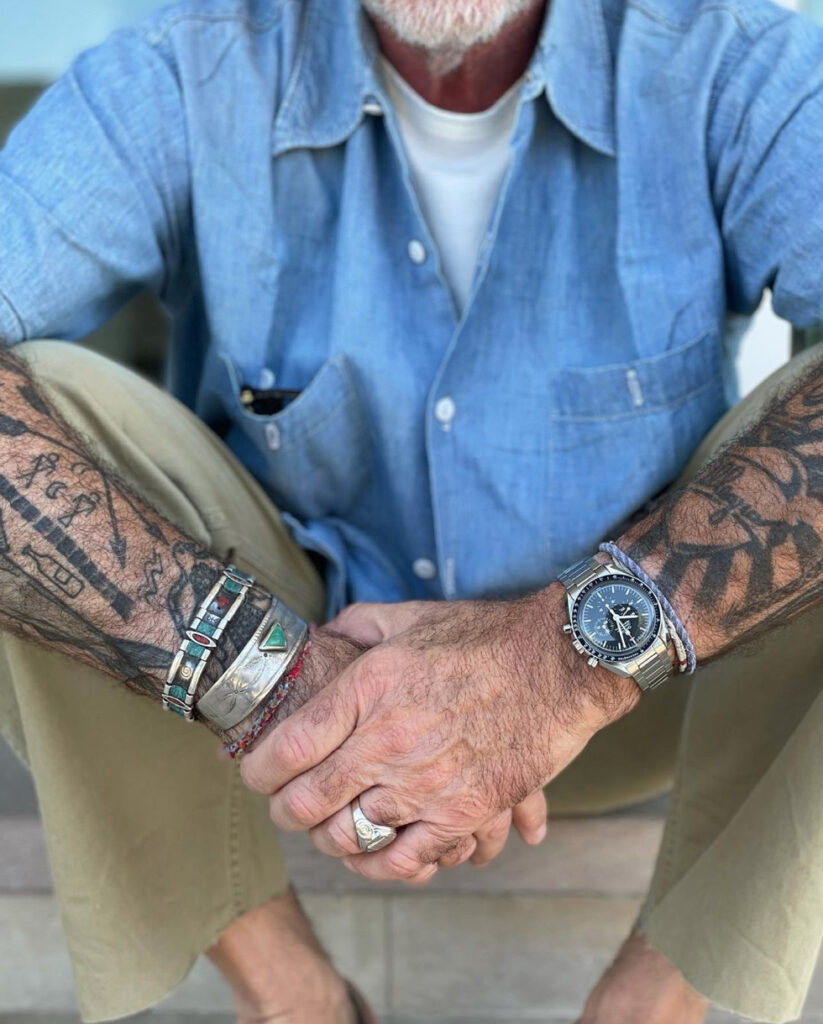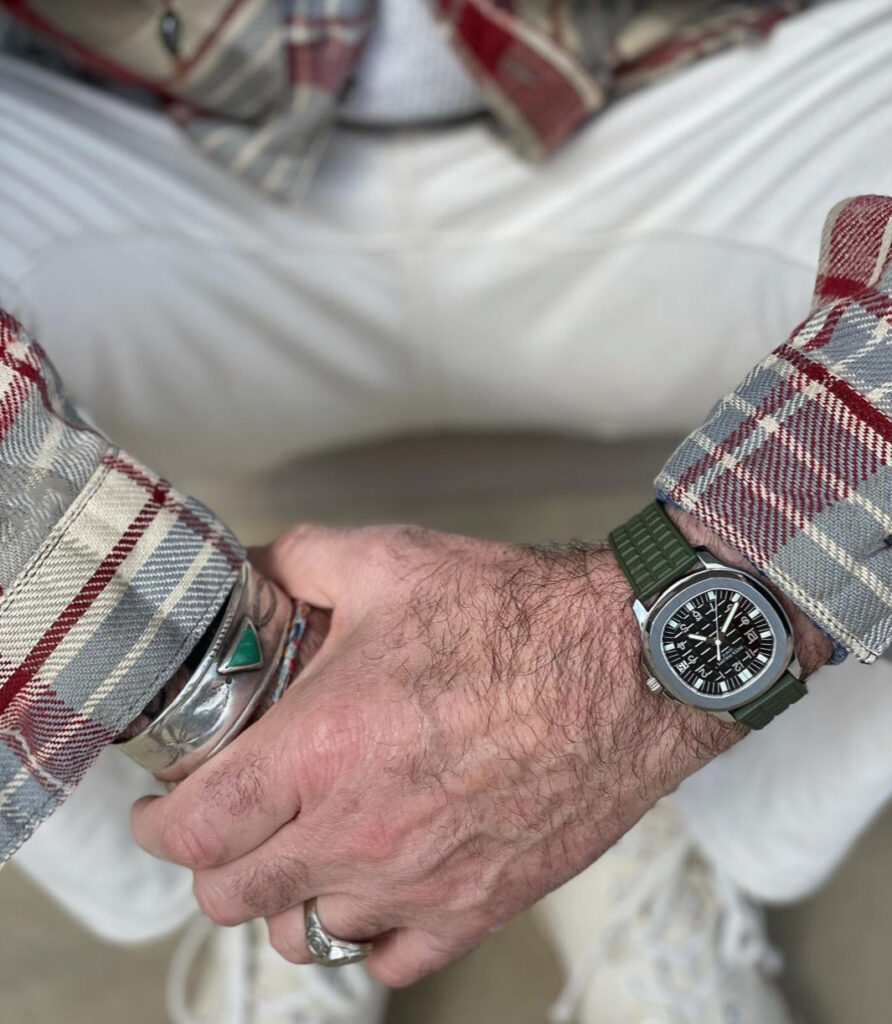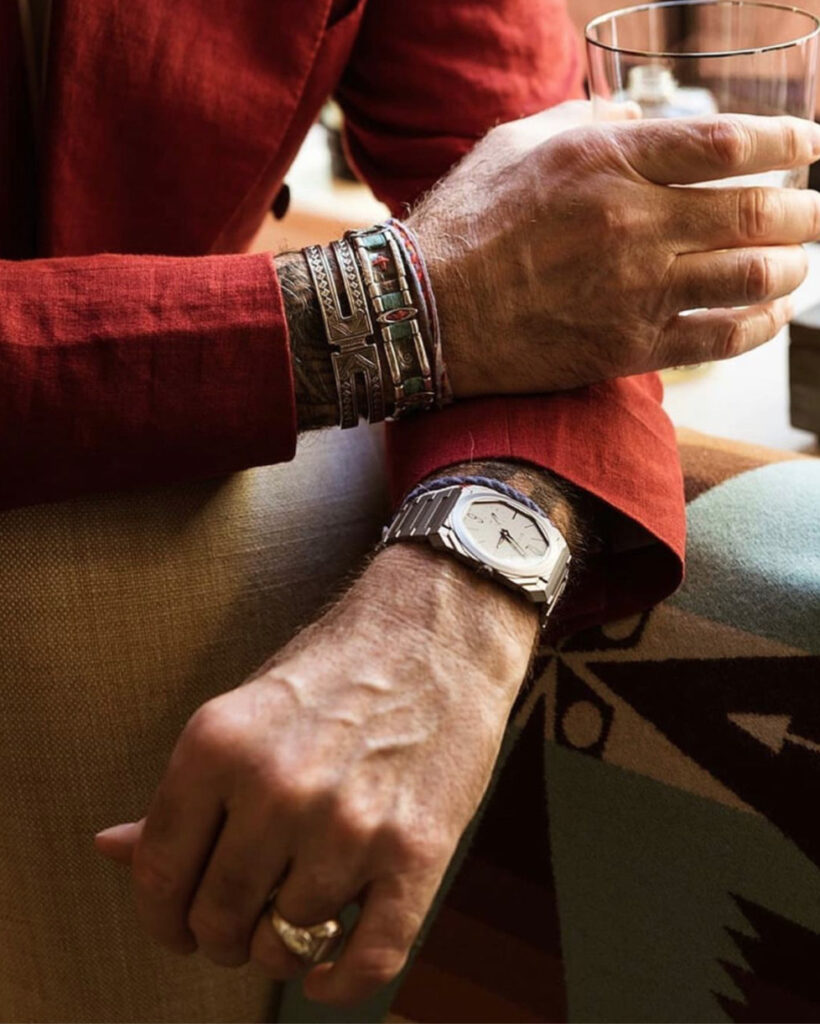Alessandro Squarzi “It’s not the watch that makes the person, it’s the person that makes the watch!”
23 November 2021Alessandro Squarzi and his outspoken vision of watchmaking: “Guys, please don’t make the mistake of thinking you’re cool because you have a certain watch on your wrist. It’s not the watch that makes the person, it’s the person that makes the watch!”
Alessandro Squarzi, with his Romagnolo smile and headquarters in Milan: we at Watch Insanity like him for at least three reasons, plus a fourth one, special to me. First: he is one of the very few influencers – with 262,000 followers on Instagram where he is the male icon of all street style icons – who went through a substantial journey offline as well, that brought him from being a young clerk in a clothing store to becoming a founding partner of the famous brand Dondup, all the way to now being the Creative Director of Fortela and Fay Archive, always with high-profile partnerships, like the spectacles that bear his name within Los Angeles star Jacques Marie Mage’s eyewear collection. Second: he has been a watch enthusiast and collector since he was a boy, with his only compass being his personal taste. Third: he says what he thinks. Fourth: he is my neighbour on the Rimini seafront.
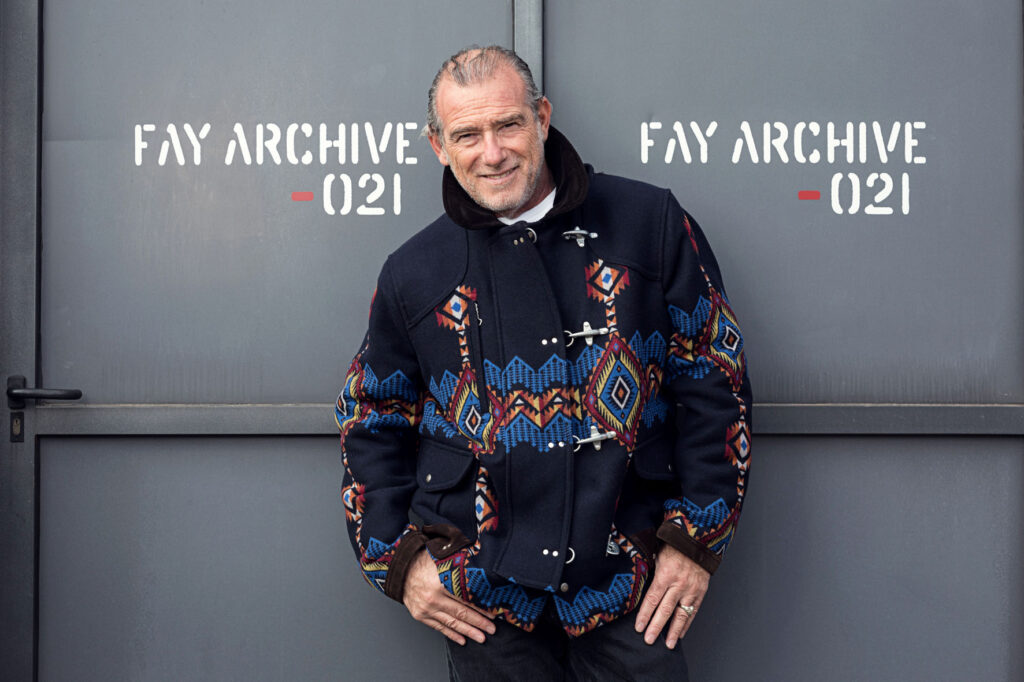
Alessandro, let’s start with the book “Time to Wear”, which you recently published together with the legendary Auro Montanari, alias John Goldberger. How was the idea born?
“Auro, as everyone knows, is a master of photography, watches and the related books. We are very close friends, and one evening at dinner he brought up the idea of the book. We thought about it and decided to combine my vintage clothes with the places I love – between Milan, Rimini, Forlì and St. Tropez – focusing on a selection among my collection that I call the ‘ugly ducklings’: the watches that are not the most emblazoned pieces and that no one considered when they were on the market, but then, instead, have become important over the years.”

Ugly Duckling, meaning being divergent; isn’t that a recurring principle of yours?
“Absolutely. In watchmaking, I am the inventor of the ‘ugly duckling’ definition. You know, on social media many of my followers are young people, and I like to pass on to them some common sense principles, regarding both fashion and watchmaking. In fashion, for example, they often ask me the name of an inexpensive pair of loafer mocassins. There’s only one answer: don’t buy inexpensive loafer mocassins because they don’t last long. Buy a quality pair of loafer mocassins because they look better and last longer. And in the end, it’s also an eco-sustainable formula because they won’t go wasted. Few people know that in clothing there is an absurd abuse: 35% of the production finishes in the garbage as new! For watchmaking, on the other hand, I push the idea that it’s not important to have a Patek Philippe or a Rolex on your wrist to be cool. I think it is highly educational to convey the concept that a watch should not be a status symbol. You should only get it if you like it, without any other condition. Guys, please don’t make the mistake of thinking you’re cool because you have a certain watch on your wrist!”
In this sense, last September you posted a photo of yourself wearing a chrono Ref. 5170 in white gold with black dial, accompanied by the following sentence: “Unfortunately, today you see sporty Pateks on the wrists of people who, until yesterday, did not know of their existence, so I’m going back to wearing the real Pateks.” Can you elaborate on this thought?
“Michele, when something becomes highly fashionable it’s the beginning of its end. You take away the intrinsic value that the object holds. Let me explain: today, people no longer buy a Nautilus because it is a watch that broke the canons of its time or because it is the maximum stylistic expression of Gerald Genta’s genius. They buy it as a status symbol. Up until a few years ago, no one knew about it and everyone preferred a Rolex, by far. And do you know why? Because back then, for a majority of people, Rolex was a status symbol.”
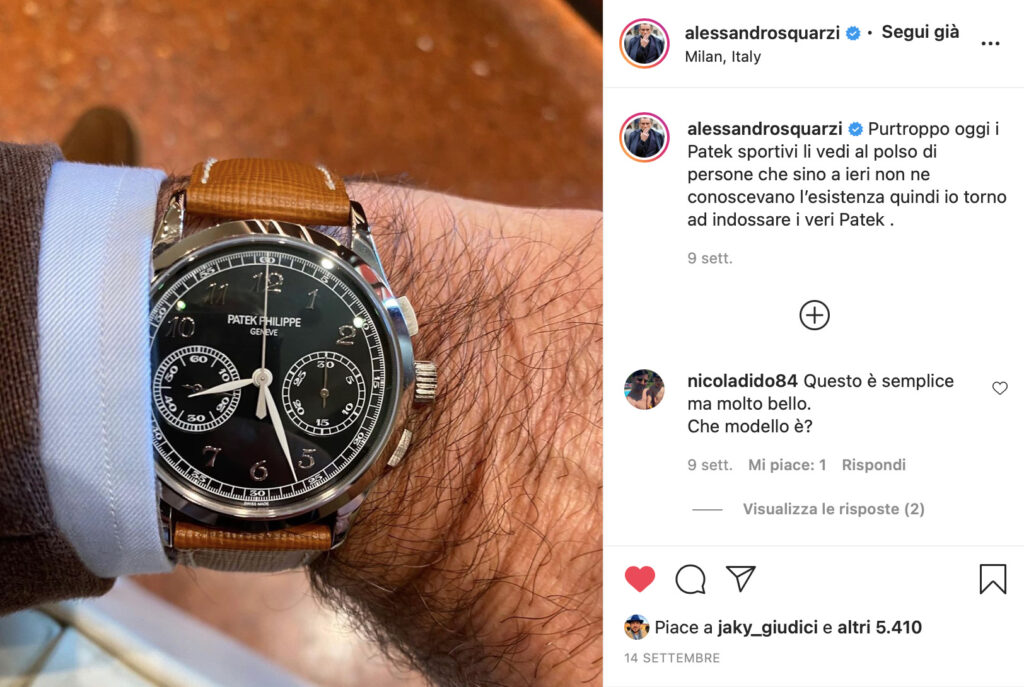
So, ultimately, is it always about status for the majority?
“That’s how it is. Now that the Nautilus phenomenon has exploded, I’ve stopped wearing one because I can’t stand going after the masses. That’s why I wear a women model of the Nautilus, because no other man does, at least not yet. Then again, this is a common phenomenon in so many other industries. Take the automobile industry. Until recently no one knew what the Mercedes G-Class was. Now all footballers drive them. And when things become fashionable, they go out of fashion for me.”
Is that why you, like Auro Montanari, wear the new Baltic Microrotor (a very recent and sold-out Limited Edition that had a list price of 600 euro)?
“I met the guys at Baltic and I appreciated their idea of making respectable watches – respectable in the sense that they meet the very high standards that we fine watchmaking lovers have – at affordable prices. It is not the watch that makes the person, it is the person that makes the watch! The Baltic Microrotor has the right size, it is not vulgar, while today’s watches are increasingly larger because for most contemporary brands and their customers it is not an object to wear but to show off. Baltic, along with many other emerging brands, is doing well. You can wear this watch with great pleasure without running the risk of being mugged. And I repeat: it’s a beautiful object on the wrist. I then changed the strap and put a vintage bracelet on mine, to make it a little more my own.”
What are you wearing right now?
“A Calatrava from the 1950s that is 33 millimeters in diameter. That demonstrates my love for divergent watches.”
What other independent brands around the 1,000-euro target do you like?
“I am a great lover of Squale. Both the vintage and current models, because most intelligently the contemporary collection is very faithful to the historical models. Squale is doing a great job. Another brand I like around this target is Alsta, famous for the Nautoscaph worn by Richard Dreyfuss in the movie ‘Jaws’. I enjoy wearing these ‘doozies’. The watches I liked as a boy and then as an adult – over the years I’ve bought them all – are mainly vintage sports watches from Rolex, Patek Philippe and Omega. For an old passion, given that I paid 10,000 euros for the Nautilus Ref. 3700 when nobody wanted it. Good taste and a good eye for beautiful things are the ingredients not only shaping my watch collection, but also defining myself. In the 80s and 90s, people bought new Rolexes while I was obsessed with old ones, like the GMT Master. And today I like to play with Squale, Alsta and Baltic.”
How you bought your first Rolex is famous. Do you want to remind us?
“A million years ago I went to Ricci’s, the Rolex dealer in Forlì, to buy a Submariner, but its price had gone up and with the 900,000 lire I had he offered me a Daytona 6263 which I still own and love. From that day on, I understood that I’m a lucky man.”
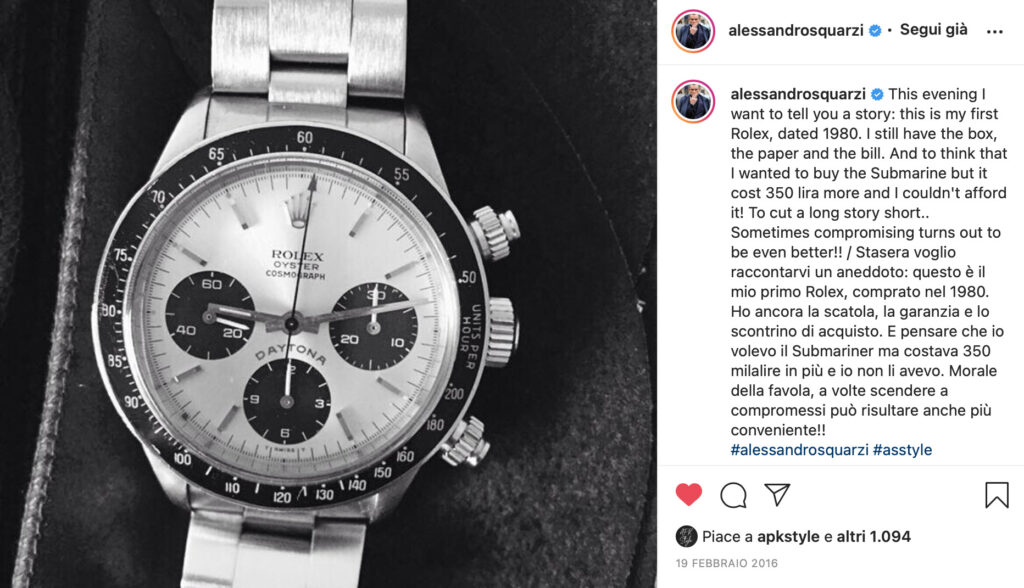
What is your relationship with auctions and how do you judge the crazy trend of continuous record breaking over the last few years?
“I’m not a fan of auctions. It’s all out of control now. Take the Nautilus 5711 with the green dial. Listed at 30,000 euros, it just went to auction at 430,000 euros! How can you say nothing’s wrong? Come on, it doesn’t take a gypsy to figure that out. That’s another reason why I’m not interested in auctions, because it’s clear that there is speculation behind, a hidden strategy, perhaps studied by Patek themselves. But even if it was, we have to congratulate Patek or whoever invented it, because this way the whole world talks about this watch and whoever is after status goes crazy about it.”
Have you ever bought a new watch above list price?
“No way! It’s really against my philosophy. I buy the objects I like, but they shouldn’t become sacrifice or mockery. But people live on these things regarding status. So, in terms of economic results, congratulations to them for managing to set these mechanisms in motion. Several watches I own have reached staggering figures, but I’d be curious to see, in the event of a sale, if these prices would be real, if they’d really fight to buy them from me. To me, it’s a big bubble. That doesn’t mean that the prices will drop because I’ve been hearing for ages that certain watches are losing value and instead it never happens. Popular trends will probably pass and their waning phase will come, especially for new watches at stellar prices: I have strong doubts that they will be able to maintain high prices in the future for this category. One model above all? The Aquanaut. When an object is trendy people go crazy for it but when it’s in decline, the collector who thinks like me doesn’t need to go to war to buy it.”
What do you think about the rising prices, always with identical models that have roughly doubled their price list in a few years only?
“Unfortunately, if you take the current events, the general increase in prices is justified by the rising prices for raw materials. Take Fortela as an example: we buy our T-shirts in Japan, and on last week’s order for 3,000 T-shirts there was a 30% increase. It is true, however, that I bought my Nautilus 5711 in 2007 and I paid 15,000 euros for it, and today the same watch, on the list, before getting out of the production line, was going for double that amount. And it’s not that Patek added enhancements: the watch is identical.”
Talking about real and perceived quality, in bar talks people go as far as making extreme comparisons for similar dial and case characteristics, for example, matching the 600 euro Baltic Microrotor with a 40 thousand euro Calatrava. What do you think about this?
“Well, it’s obvious that Patek’s margins are colossal compared to those of Baltic, however, with such comparisons, there is a risk of confusion. To pass off the concept that they are comparable watches is simply absurd. I’ll give you another example about fashion. A white T-shirt is a white T-shirt, there’s little you can do about it. One that costs 10 euros, however, becomes a rag after washing it for six months. Fortela’s, on the other hand, the more you wear it, the more beautiful it becomes because it is made with a Japanese fabric that costs 25 euros per meter and is sewn and processed with special machinery from the 30s. In watchmaking, quality manufacturing is based on the same principle. Another example that seems fitting is the automobile industry. You can get to Milan from Rimini whether you drive a G-Class or a Fiat Panda, but the quality of the journey is inevitably different. It is clear that the quality/price ratio of a Baltic Microrotor is crazy, but a Calatrava by Patek is something else. Because in watchmaking, as in life, it’s the details that make the difference.”

And what are the contemporary high-end watches that are now making a difference?
“I find the Speedmaster wonderful in both the Moonwatch version with the 3861 movement and the Calibre 321 version. Omega with the Speedmaster, unlike Rolex with the Daytona, has been good at not taking away that vintage vein that gives it great charm. Then I appreciate the Octo Finissimo because today it has broken the aesthetic-technical canons as the Nautilus did in the 70s. And I really love the Overseas by Vacheron Constantin: it is a product of the highest quality that has nothing less than their competitors Patek and Audemars Piguet sports watches, better yet. And in fact, many of these contemporary models are on the waiting list.”
Speaking of waiting lists, what do you think of them?
“As an entrepreneur, I say bravo because creating expectations is an extraordinary marketing lever that always works, obviously if the product is a winner. On the other hand, there is also a waiting list at Hermès for the Birkin. It is a situation that is part of the game. Otherwise, if everything was immediately available, there would be no object of desire.”
We conclude with Fortela. Making a parallel with watchmaking, who inspires you?
“The road we have chosen for Fortela is the most difficult of all because we make high-end products that do not follow trends. We do not target customers chasing status, but niche customers capable of perceiving the added value of products that are recognizable from afar, not because of the logo but because of their different ‘taste’ – because those are not products that you throw away: when you get tired of them you just put them in the closet and three years later you can wear them again because they’ll never be out of fashion. Therefore, the comparison, which is not meant to be irreverent, is with the most beautiful advertisement in the history of watchmaking: ‘You never actually own a Patek Philippe. You merely look after it for the next generation.’”
By Michele Mengoli

